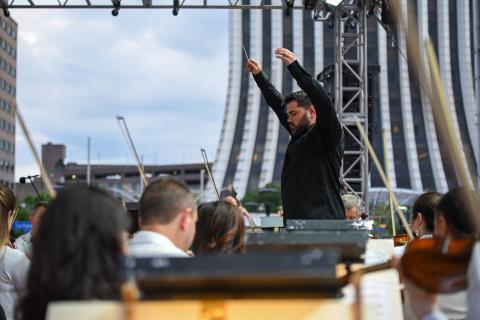How 911 works: What happens when you call or text 911 in Rochester
Calling 911
Most of us take this important task for granted; a guarantee that someone else will be there on the other end of the phone, ready to help at a moment's notice.
As simple as it may seem, the 911 system is very clever and sophisticated.
Let's take a look at what happens when you call. Most phones can dial 911.
When you dial 911
- The signal goes to the phone company's database.
- There, it finds out the information that you supply the phone company when you start your service.
- Then your signal, along with the information, is sent to us in the form of Automatic Name and Location information (ANI/ALI).
Our 911 Center is Phase II compatible with most cellular telephone companies. After ten seconds, we can send a signal to your phone to request your GPS coordinates.
When you dial 911, please stay on the line, do not hang up!
Calls to 911 are taken in the order in which they are received. If you hang up and call back, your call goes to the top in the queue, making you wait longer.
The Telecommunicator answering your 911 call:
- Asks questions to determine the who, what, where, how and why. They know that action taken based on incomplete or inaccurate information can endanger callers, victims and the responders. You can help by being as precise and exact as possible when providing information during a 911 call.
- Determines the type of service needed using a proven and efficient interview process. They provide initial help if necessary and then immediately contact the appropriate emergency agency to dispatch assistance.
- Is the first link in the Medical Survival Chain, providing Pre-Arrival and Post-Dispatch instructions to callers with a medical emergency. Critical procedures such as CPR, airway management, and childbirth, just to name a few, can be started before more advanced help arrives.
- Uses a Computer Aided Dispatch terminal. Together with a touchscreen telephone interface, information about the caller's location and phone number is available for verification by the Telecommunicator.
Once the Telecommunicator has analyzed the situation, the call is immediately routed by computer to a dispatcher for the appropriate emergency response (Police, Fire or EMS) to provide the service(s) needed.
Texting 911
Monroe County 911 has “Text to 911,” an option for Verizon, T-Mobile, AT&T and Sprint customers who need to contact 911. Monroe County is the first 911 Center in New York State to accept text messages from all four major carriers.
Text to 911 is intended primarily for use in two emergency scenarios:
- For an individual who is deaf or hard of hearing;
- And for a person who is unable to make a voice call, for example during a medical emergency that renders the person incapable of speech, or in the instance of a home invasion or abduction.
Important Information for Verizon Wireless, AT&T, Sprint, and T-Mobile Customers in Monroe County:
- Customers should use the texting option only when calling 911 is not an option.
- Using a phone to call 911 is still the most efficient way to reach emergency help. Texting is not always instantaneous, which is critical during a life-threatening emergency.
- Providing location information and nature of the emergency in the first text message is imperative, since the Communications Center will receive only an approximate location of the cell phone and will not be able to speak with the person sending the text.
- Text abbreviations or slang should never be used so that the intent of the dialogue can be as clear as possible.
- Customers must be in range of cell towers in Monroe County. If customers are outside or near the edge of the county, the message may not reach the Emergency Communications Department.
- Texts sent to 911 have the same 160-character limit as other text messages.
- Verizon Wireless customers who use Usage Controls should remove this feature to ensure full text to 911 capabilities.
- Text messages should only be used to communicate between 911 Center and the sender. Pictures, video, other attachments or including other recipients are not able to be accommodated.
VOIANCE Language Services
Monroe County 911 uses an interpreter service, so whatever language you speak, 911 will be able to assist you with a 3-way phone conversation between the telecommunicator, the interpreter, and the citizen.
of service inquiries and/or compliments, either call 911 and ask for a supervisor, or call 585-528-2200 Monday through Friday between 9 a.m. and 5 p.m. and ask for the Operations Manager on duty.
We're hiring!A rewarding career with outstanding pay and benefitsWe’re here first when seconds count. If you:
... then this is the job for you. | Image  |






